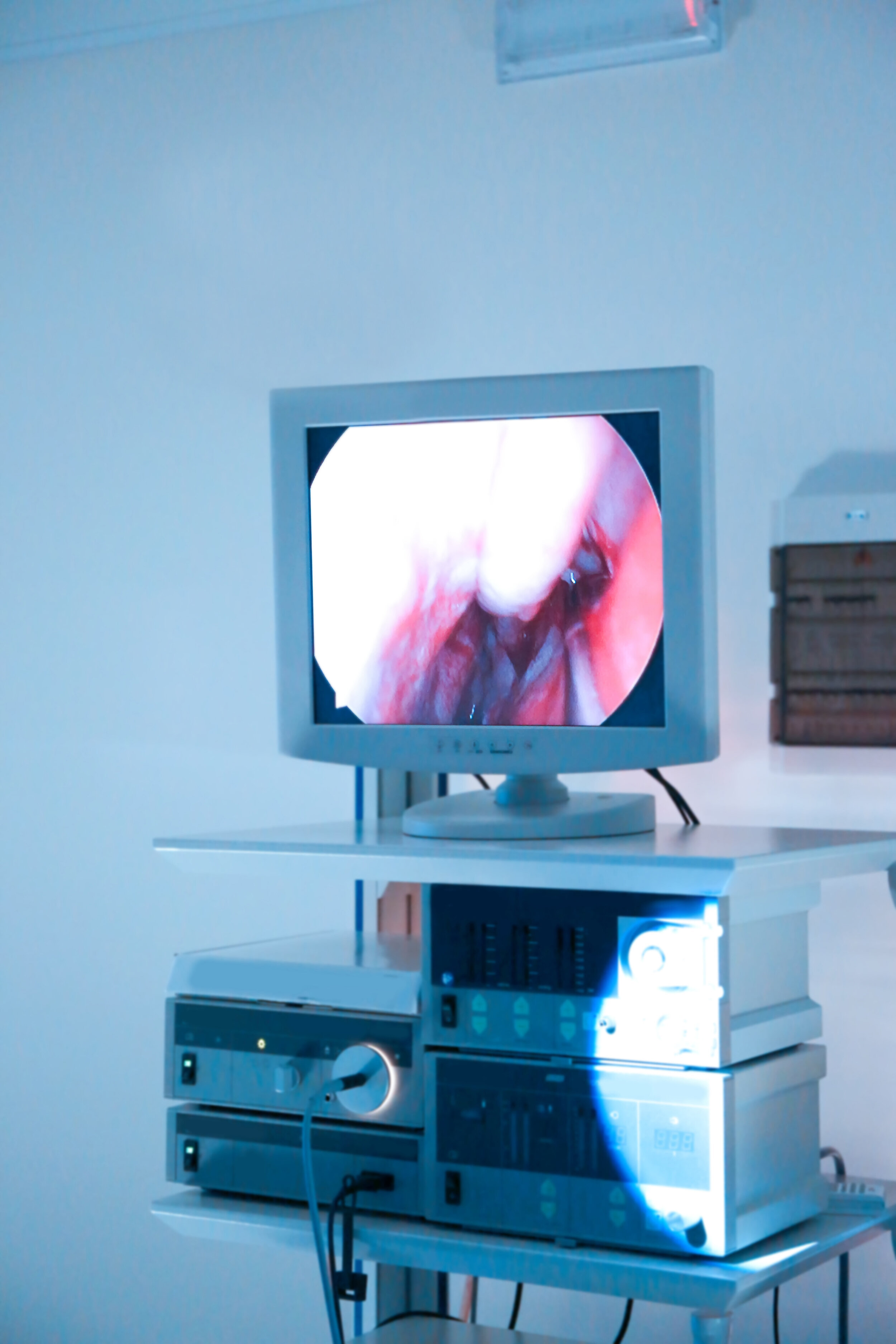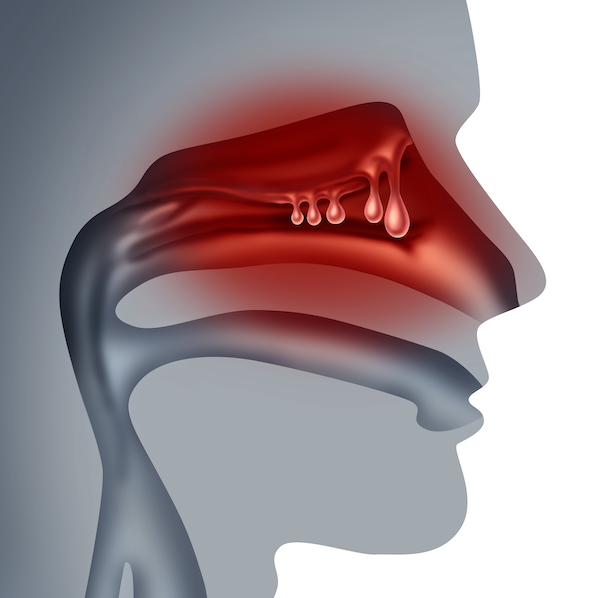Treatments: Sinus Infection (Sinusitis)
When treating sinusitis, there is no “one size fits all” treatment. Individualized treatment involves medical evaluation, discussion of treatment options (including risk, benefit, and expected outcomes) and ultimately, the degree to which the symptoms affect a given patient and their motivation to improve their sinus health. Fortunately, there are many successful medical and minimally invasive options available.
medical (non-surgical) approaches to sinusitis
Non-surgical treatment for sinusitis is usually successful and is the starting point for treating sinus infections. Different regimens are tailored to a specific patient situation and maximal medical therapy involves several different medical approaches for the best chance at success. Medical treatment may consist of combined and simultaneous use of sinus/nasal saline rinses, decongestant spray, topical steroid spray, a mucus thinner, an oral antibiotic, a course of oral steroid, a reflux medication, and sometimes adding medication directly to the sinus/nasal rinses. Additionally, determining if environmental allergies are present and possibly contributing to sinusitis could create an avenue to treat sinus infection without surgery by treating allergies.
Acute sinusitis
If left untreated, acute sinusitis would typically run its course and resolve after a couple of weeks in an otherwise healthy individual. This is in fact how our distant ancestors dealt with acute sinusitis for hundreds of thousands of years. In the modern era, however, most people find benefit to treat an acute sinus infection to shorten the duration of symptoms and lessen the chance of a severe complication of the sinus infection. This typically involves multiple ways of attacking the infection simultaneously: a brief course of a nasal decongestant to open up the nooks and crannies, a nasal steroid spray to decrease the inflammation, nasal saline rinse to wash away infection, an oral antibiotic, a brief course of oral steroids also to decrease inflammation, and a reflux medicine. One month after this treatment regimen, patients have usually declared themselves as full responders or not. If the beneficial response is not complete, other options, such as a sinus procedure become available. Allergy testing (and treatment, if positive) is considered depending on symptoms.
Chronic sinusitis
Chronic sinusitis is in general more difficult to resolve than acute sinusitis, and more commonly requires surgery or other special measures like antibiotic infused sinus rinses. Despite these somewhat less favorable odds for success after a course of medical therapy, many chronic sinus infections are resolved with a non-surgical approach. This typically involves multiple ways of attacking the infection simultaneously, as detailed above under acute sinusitis, including consideration of allergy testing and possible allergy treatment. If the beneficial response is not complete, other options, such as a sinus procedure may become available.
allergy treatments
Environmental allergies often predispose an individual to sinus infection. Many times, a pattern of cause and effect (such as exposure to a cat) is diagnostic. A repeated pattern (such as Springtime symptoms) is also telling. When this is the case, efforts to avoid the trigger and use of nasal saline after exposure plus use of a nasal steroid spray for the weeks surrounding exposure is often a suitable treatment regimen. For ongoing problems or in more severe cases, further evaluation can be quite helpful. Allergy testing can identify specific trigger particles (allergens) that help an individual avoid exposure. Additionally, once specific triggers are identified, allergy treatment may be undertaken, which involves very controlled exposure to the allergen itself in increasing doses over time to teach one’s immune system to become tolerant to those particles.
functional endoscopic sinus surgery
Endoscopic sinus surgery is a minimally invasive approach, performed through the nostrils to open the sinuses and lessen the anatomic predisposition to infection. The specific way sinus surgery works is based on a few key principles. First, bacteria (and fungi) tend to thrive in nooks and crannies, so creating an open and smooth surface helps (specifically with the ethmoid sinuses). Second, the frontal, maxillary, and sphenoid sinuses drain to the nose through a small opening that can close off, creating a contained space. Widening this small opening not only allows infection to drain out better, but also allows rinses (with or without antibiotics) to get in better. A wider opening yields access for sampling of a given infection to test for which bacteria are growing and what antibiotics are effective against that strain. Endoscopic sinus surgery may not guarantee the absence of any sinus infection for the remainder of one’s life, but it does lessen the frequency, duration, and intensity of sinus infections overall. It can be done in the operating room with the patient completely asleep or in select cases, in the clinic with numbing and some degree of sedation. Either way, the patient typically goes home the same day and after one to three days, most of the recovery is over.
Balloon sinuplasty
Recent advancements in surgical technique and instruments yielded balloon sinuplasty, a simple but powerful sinus surgery technique to treat appropriate sinus conditions with minimal downtime. In the appropriate scenario, this technique offers an advantage in better access to the sinus, minimal disruption of normal tissue, and an easier recovery. Balloons can be a great tool, and may be combined with other non-balloon techniques to fit a given situation.
nasal polyp treatments
Nasal polyps are like watery bags of swollen lining of the nose and sinuses. Since the cause of these polyps is innate to the individual (and not yet entirely understood), often relating to allergies, polyps may be surgically removed, medically shrunk, or have their further growth slowed polyp, but an individual’s predisposition to polyp formation cannot be cured. For that reason, polyp treatments consist mainly of preventing their growth and only when the symptoms are bad enough would a procedure or or immunotherapy (shots) be advised. Prevention (or slowing of the growth) consists of identifying any allergy trigger and managing that allergy (see above) and usually use of a nasal steroid spray and a salt water rinse on a regular basis. Oral steroids may be used to calm down a flare-up, but are not a good long-term treatment option because of side effects of steroids that circulate throughout the body. A newer type of treatment involves getting injections under the skin of a monoclonal antibody, dupilumab (Dupixent), every other week on an ongoing basis. This antibody therapy alters the immune system and has shown promise in reducing the burden of polyps, though treatments continue long-term. Other treatments to reduce this type of inflammation (such as montelukast and cromyln) may provide additional benefit. Procedures to remove polyps may be performed in the office or the operating room, and because nasal polyps commonly create a chronic sinus infection, sinus opening procedures may be included at that time.
This page











